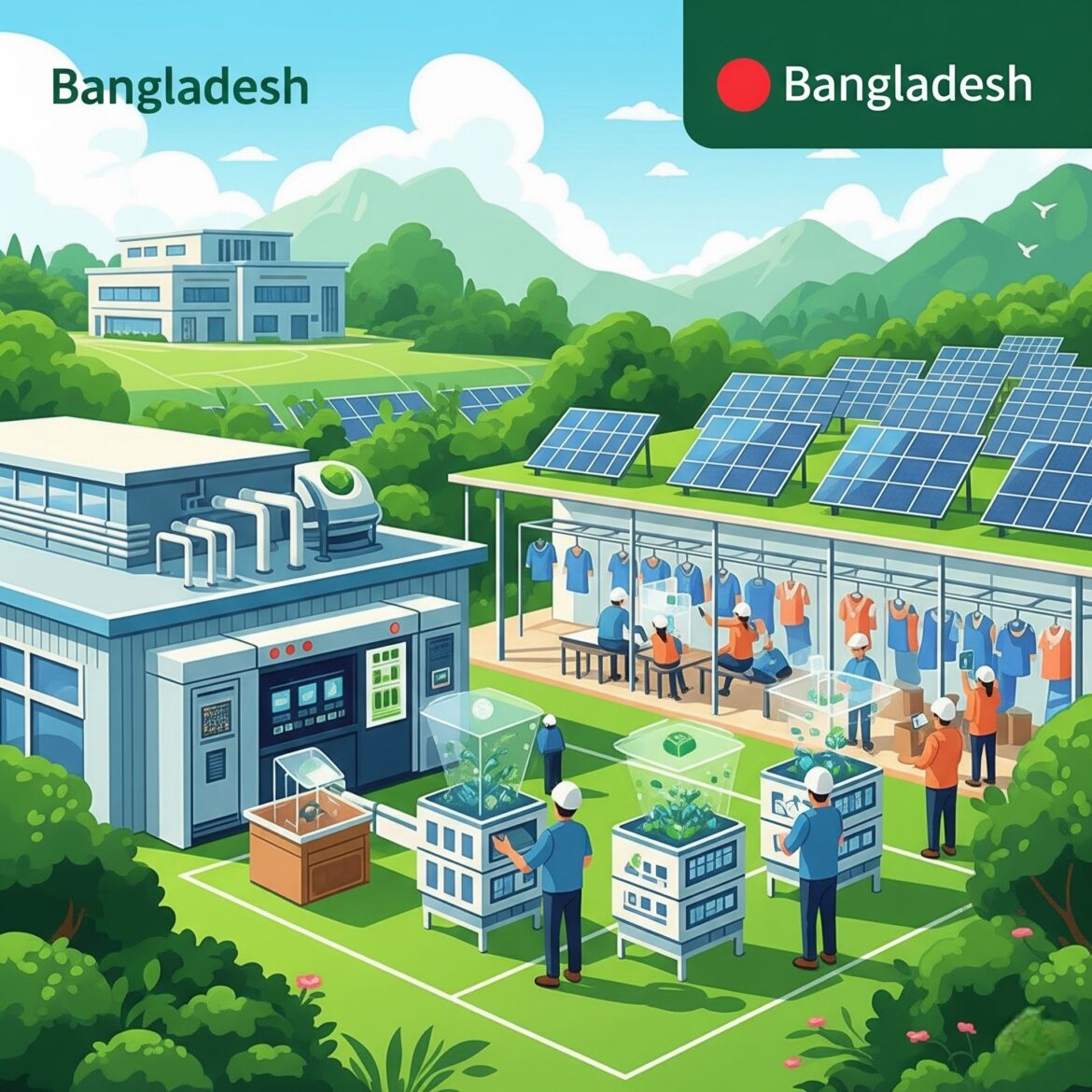Bangladesh is emerging as a global frontrunner in sustainable apparel manufacturing, driven by strong actions across energy, factory design, and supply chain practices. Recent data shows that the country now hosts over 240 LEED-certified green garment factories—the highest number worldwide—and includes nine of the top ten highest-rated global facilities. Under its “Sustainability Vision 2030,” the Bangladesh Garment Manufacturers and Exporters Association (BGMEA) has committed to reducing greenhouse gas emissions by 30%, sourcing 50% of materials sustainably, and achieving zero discharge of hazardous chemicals. Nearly 1,300 factories have already used the Higg Facility Environmental Module to measure performance on energy, water, and emissions—showing stronger results than global averages. Factories are also investing heavily in renewable energy. Solar rooftop systems and bioenergy units are being installed to cut reliance on natural gas, which accounts for over half of the country’s energy supply. This shift aims to reduce energy costs and carbon output. For some production units, adding solar panels has cut power costs by nearly half, while improving worker comfort and positioning factories for global competitiveness. The factory landscape now includes leaders like Tasniah Fabrics Ltd, recognized as the world’s highest-scoring LEED-certified apparel factory, and other plants achieving platinum and gold ratings in emissions, energy efficiency, and indoor environmental quality. Beyond energy, the industry is committed to broader sustainability goals: expanding water recycling, reducing waste, and adopting laser and ozone dyeing to minimize environmental impact. Circular initiatives are in progress to turn textile waste into new products, aligning with global shifts toward ecofriendly production. These green efforts are not only environmental—they offer economic gains too. Operations with solar and efficiency upgrades enjoy lower utility expenses and better resilience to energy price changes. Many global buyers now prefer sourcing from certified green factories, providing Bangladesh with a market edge. Initial public feedback highlights both environmental and labor gains. Some workers report improved air quality and workplace comfort in certified facilities. Phrases like “healthier work environments” have become part of the industry’s new identity. Still, challenges remain—smaller factories face cost barriers for certifications, and there’s a need for broader training and technical support. Efforts are underway by industry bodies to offer incentives, expert assistance, and collective ESG data tools. In essence, Bangladesh’s apparel industry is transitioning from a low-cost producer to a sustainability leader. By combining environmental standards with strong economic incentives, the country is reshaping its role in global fashion—demonstrating that sustainable production can also be profitable, competitive, and inclusive.
Bangladesh Positioned to Lead Sustainable Apparel Manufacturing
48


